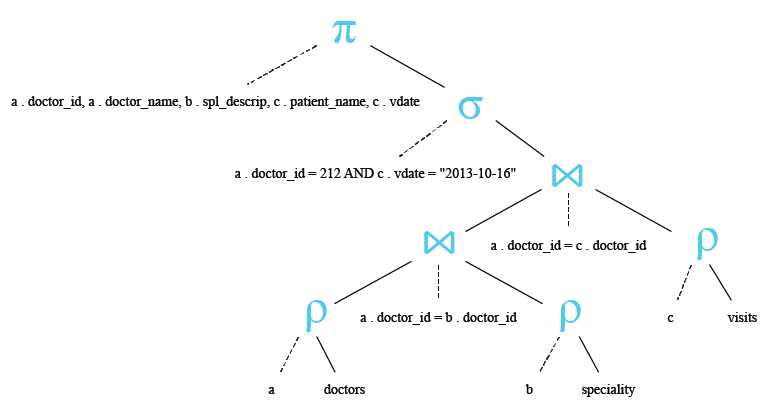
See the following customers and orders tables in the sample database:Įach customer has zero or more orders. Note that we only put T1 table after the DELETE keyword, not both T1 and T2 tables like we did with the INNER JOIN clause.
SQLITE INNER JOIN ON SUBQUERY CODE
T2.key IS NULL Code language: SQL (Structured Query Language) ( sql )
SQLITE INNER JOIN ON SUBQUERY HOW TO
The following syntax illustrates how to use DELETE statement with LEFT JOIN clause to delete rows from T1 table that does not have corresponding rows in the T2 table: DELETE T1 We can also use the LEFT JOIN clause in the DELETE statement to delete rows in a table (left table) that does not have matching rows in another table (right table). We often use the LEFT JOIN clause in the SELECT statement to find rows in the left table that have or don’t have matching rows in the right table. It indicated that two rows have been deleted. The statement returned the following message: 2 row(s) affected Code language: SQL (Structured Query Language) ( sql ) T1.id = 1 Code language: SQL (Structured Query Language) ( sql )

The following statement deletes the row with id 1 in the t1 table and also row with ref 1 in the t2 table using DELETE.INNER JOIN statement: DELETE t1,t2 FROM t1 INSERT INTO t2( id, ref) VALUES( 'A', 1),( 'B', 2),( 'C', 3) Code language: SQL (Structured Query Language) ( sql ) Suppose, we have two tables t1 and t2 with the following structures and data: DROP TABLE IF EXISTS t1, t2 MySQL DELETE JOIN with INNER JOIN example The condition in the WHERE clause determine rows in the T1 and T2 that will be deleted. The expression T1.key = T2.key specifies the condition for matching rows between T1 and T2 tables that will be deleted. If you omit T1 table, the DELETE statement only deletes rows in T2 table. Similarly, if you omit T2 table, the DELETE statement will delete only rows in T1 table. Notice that you put table names T1 and T2 between the DELETE and FROM keywords. WHERE condition Code language: SQL (Structured Query Language) ( sql ) MySQL also allows you to use the INNER JOIN clause in the DELETE statement to delete rows from a table and the matching rows in another table.įor example, to delete rows from both T1 and T2 tables that meet a specified condition, you use the following statement: DELETE T1, T2

This tutorial introduces to you a more flexible way to delete data from multiple tables using INNER JOIN or LEFT JOIN clause with the DELETE statement.

Here is an example of a SQLite LEFT OUTER JOIN: SELECT employees.employee_id, employees.last_name, positions.title The SQLite LEFT OUTER JOIN would return the all records from table1 and only those records from table2 that intersect with table1. In this visual diagram, the SQLite LEFT OUTER JOIN returns the shaded area: In some databases, the LEFT OUTER JOIN keywords are replaced with LEFT JOIN. The syntax for the SQLite LEFT OUTER JOIN is: SELECT columns This type of join returns all rows from the LEFT-hand table specified in the ON condition and only those rows from the other table where the joined fields are equal (join condition is met). It contains the following data:Īnother type of join is called a SQLite LEFT OUTER JOIN. We have a table called employees with four fields (employee_id, last_name, first_name, and position_id). Let's look at some data to explain how the INNER JOINS work: This SQLite INNER JOIN example would return all rows from the employees and positions tables where there is a matching position_id value in both the employees and positions tables.

ON employees.position_id = positions.position_id Here is an example of a SQLite INNER JOIN: SELECT employees.employee_id, employees.last_name, positions.title The SQLite INNER JOIN would return the records where table1 and table2 intersect. In this visual diagram, the SQLite INNER JOIN returns the shaded area: The syntax for the INNER JOIN in SQLite is: SELECT columns SQLite INNER JOINS return all rows from multiple tables where the join condition is met. Chances are, you've already written a statement that uses a SQLite INNER JOIN.


 0 kommentar(er)
0 kommentar(er)
